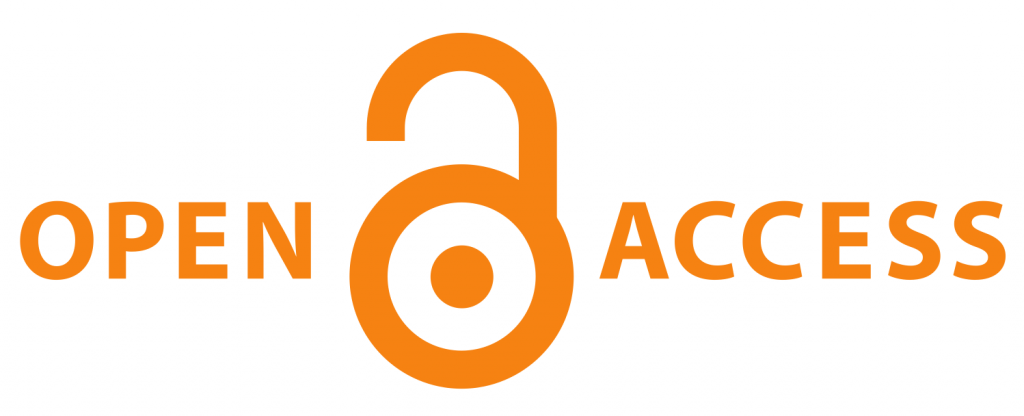Challenges and Prospects of Implementation of ISO 9001:2015 in TVET Institutions: The Case of Nkabune Technical Training Institute
Abstract
Quality is considered to be a competitive weapon in today’s marketplace. There is now a shift to service-based economies where supply chain has become complex and there are increased expectations from customers. Consequently, there is a need for a greater focus on customer requirements where conformity of products and service delivery should be ensured. This can be achieved through the implementation of high-level-structured Quality Management Systems (QMS) such as the ISO 9001:2015, an updated version of the ISO 9001:2008. A significant number of TVET institutions have induced the confidence of their stakeholders by implementing ISO 9001:2015 into their system; however, there is major gap in research in the area of ISO 9001:2015 implementation in these institutions. The aim of this paper therefore is to investigate the challenges and prospects of Implementing ISO 9001:2015 in TVET institutions and propose solutions to address these challenges. The research adopted a mixed methods approach and a two-stage sampling procedure was used on a sample size comprising 33 teaching and none teaching staff of Nkabune Technical Training Institute. A toolkit containing a self-administered questionnaire and a structured in-depth interview guide was used. The study ascertained that Nkabune Technical Training Institute in its quest to acquire and implement ISO 9001:2015 certification encountered key challenges namely: massive documentation requirements, high cost of hiring consultants, and complexity of the processes and lack of clear understanding of ISO requirements. The standard is highly documentation-driven and requires that all documentation be updated to reflect all its system requirements. The study recommends the use of an effective document management system that ensures easy accessibility and accuracy of documents while maintaining their validity. Academic institutions should also consider integrating ISO 21001:2018 management system for educational organizations to complement other international standards. Development of a good organizational culture is also a fundamental pre-requisite to the successful implementation of the standard and for the achievement of quality.
Article Views and Downloands Counter
References
Aven, T. (2008). Risk analysis: Assessing uncertainties beyond expected values and probabilities. John Wiley & Sons, Chichester, UK.
Bouayad, A. (2013). ISO 9001 and the field of higher education: Proposal for an update of the IWA 2 guidelines. Quality Approaches in Higher Education. 4. 14-19.
Fotopoulos, C. B. & Psomas, L. (2009). The impact of “soft” and “hard” TQM elements on quality management results, International Journal of Quality & Reliability Management, 26(2), 150-163
Hunt, L. (2014). ISO 9001:2015 - Understanding the key changes. Lorri Hunt & Associates Inc.
ISO. (2017). Survey of certifications to management system standards. Retrieved October 30, 2018, from ISO: http://www.iso.org/iso/home/about/the_iso_story.htm
Juanzon, J. B. P., & Muhi, M. M. (2017). Significant factors to motivate small and medium enterprise (SME) construction firms in the Philippines to implement ISO 9001:2008. Procedia Engineering, 171, 354–361.
Karapetrovic, S. (1997). Creating zero defect students. Total Quality Management, 9(4), 287-291.
Karapetrovic, S., Rajamani, D., & Willborn, W. (1998). ISO 9001 quality system: An interpretation for the university. Int. J. Eng., 14(2), 105-118.
Mersha, T. (2007). Narrowing ISO certification gap in Africa. International Journal of Productivity and Quality Management, 2 (1), 65-80.
Moturi, C. & Mbithi, P. M. F. (2015). ISO 9001: 2008 implementation and impact on the University of Nairobi: A case study. The TQM Journal, Vol. 27. 752-760
Nabavi, V., Azizi, M., & Faezipour, M. (2014). Implementation of quality management system on ISO 9001:2008 and its effects on customer satisfaction case study: Kitchen worktops factory. International Journal of Quality & Reliability Management, Vol. 31. 921-937
Ochieng, J. Muturi, D. & Njihia, S. N. (2015). The impact of ISO 9001 implementation on organizational performance in Kenya. The TQM Journal, Vol. 27 Issue: 6, pp.761-771
Sampaio, P., Saraiva, P. & Guimarães, R. A. (2011). The economic impact of quality management systems in Portuguese certified companies: Empirical evidence. International Journal of Quality & Reliability Management. 28.
Saunders, M., Lewis, P. & Thornhill, A. (2009). Research methods for business students. Pearson, New York.
Valmohammadi, C., Kalantari, M. (2015).The moderating effect of motivations on the relationship between obtaining ISO 9001 certification and organizational performance. TQM Journal, Vol. 27 Issue: 5, pp.503-518,
Zabadi, A. M. A. (2013). Implementing total quality management (TQM) on the higher education institute
Copyright (c) 2020 Africa Journal of Technical and Vocational Education and Training

This work is licensed under a Creative Commons Attribution-NonCommercial-ShareAlike 4.0 International License.
Copyright Notice Copyright of published articles is held by AfriTVET. No limitation will be placed on the personal freedom of authors to copy or to use in subsequent work, material contained in their papers. Please contact the Publisher for clarification if you are unsure of the use of copyright material. Apart from fair dealing for the purposes of research and private study, or criticism and or review, this publication may only be reproduced, stored or transmitted, in any form or by any means, with the prior permission in writing of the Publishers.


